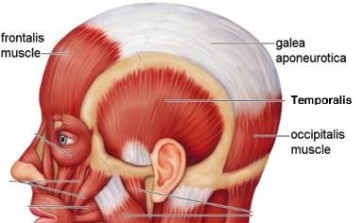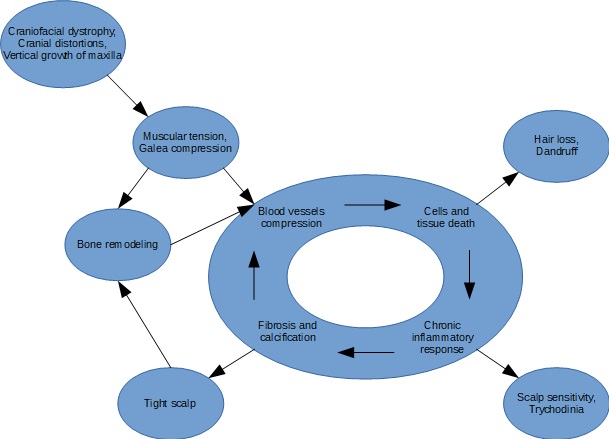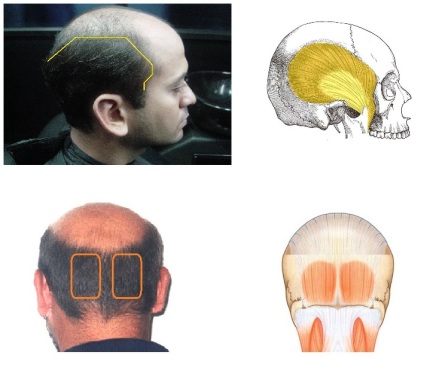JamesHowlett
Retiring from Looksmaxxing after I’m lean
- Joined
- Oct 31, 2019
- Posts
- 7,378
- Reputation
- 10,954
Meant to add side pic, added nowyeah its the same reason i mentioned in my old thread
Follow along with the video below to see how to install our site as a web app on your home screen.

Note: this_feature_currently_requires_accessing_site_using_safari
Meant to add side pic, added nowyeah its the same reason i mentioned in my old thread
That’s only because you militarymaxxedI’ve gone bald before and girls liked it believe it or not.
Meant to add side pic, added now
Yeah they are selfies, I have this from where my hair has grown out a bit, not totally buzzed:
View attachment 751295
Is it normal how tall the back of my head is compared to the front? Does that contribute to compact face?Yeah your galea is not expanded at all. You just have a low hairline. All the bald men i posted already had massive foreheads before they went bald and they still had big galeas with hair.
it's mainly about neck posture. not keeping your head up straight results in tension in your neck and that in results in:I dont think posture is extremely important. how is your posture @JamesHowlett ? I think if you had bad posture you would still keep your hair.
only losing hair at the front is a bit differentWhen neck muscles are in continuous tension, their action propagates to the head, stretching and tightening the galea against the underlying layers of the scalp. The underlying structure is rich of blood vessels that are compressed, blocking blood flow towards the hair follicles. The restriction in blood supply to tissues is called ischemia: this leads to insufficiency of oxygen (hypoxia), reduced availability of nutrients and inadequate removal of metabolites. This obviously leads to the death of tissues, thus including the hair follicles (hair loss) and surrounding structures.
yeah it is normal. Most non balding galeas i see are higher at the back than at the front. My galea is also slightly higher at the back than at the front.Is it normal how tall the back of my head is compared to the front? Does that contribute to compact face?


his neck posture looks pretty goodYeah your galea is not expanded at all. You just have a low hairline. All the bald men i posted already had massive foreheads before they went bald and they still had big galeas with hair.
losing hair at the front is all to do with galea.it's mainly about neck posture. not keeping your head up straight results in tension in your neck and that in results in:
only losing hair at the front is a bit different
if he had terrible posture he would not get a receding hairline. All the men with this certain type of headshape dont just coincidentally have good posture.his neck posture looks pretty good
.
'Gravity theory' may explain male pattern baldness
The effects of gravity may explain the apparently paradoxical effects of testosterone in male pattern baldness, or androgenic alopecia, according to new research.www.sciencedaily.com
" He believes that individual hair loss patterns are affected by differences in the shape of the head, reflecting variations in scalp pressure. The weight of the facial soft tissues adds to the pressure at the front of the scalp, contributing to hair loss there. In contrast, the ears help resist the effects of gravity on the scalp, lessening hair loss on the sides of the head. "
This could be legit tbh







losing hair at the front has a lot to do with the usage of the frontalis muscle.losing hair at the front is all to do with galea.
if he had terrible posture he would not get a receding hairline. All the men with this certain type of headshape dont just coincidentally have good posture.

most non bald men have above average posture, but it's certainly not a coincidence, i never said that.All the men with this certain type of headshape dont just coincidentally have good posture.
like i said, one part is from the frontalis muscle and the other from the neck. tension in either of those leads to tension in the galea which leads to hair loss and the cone head shape.@AutisticBeaner do you think if these two men had perfect neck posture they would have kept all their hair and a norwood 1? I dont even know what their posture is like. It might even be good.
View attachment 751349View attachment 751350
I think their head shape is purely genetic and not due to skull expansion because of poor posture. It is all determined when you are born and not because of your posture. Like i said maybe poor posture can cause crown thinning or something but not a receding hairline.like i said, one part is from the frontalis muscle and the other from the neck. tension in either of those leads to tension in the galea which leads to hair loss and the cone head shape.

send proper pictures. But no i do not think you can. DM better pictures. And i will break down your headshape for you.View attachment 751374will i go bald

send proper pictures. But no i do not think you can. DM better pictures. And i will break down your headshape for you.



you agree that in bald people the galea is much more tensed and there's a scientific law saying bones put under pressure grow, what exactly do you disagree with?I think their head shape is purely genetic and not due to skull expansion because of poor posture.
can you pull your hair back like the guy did in the above post? I need to get an idea of what your galea is like.
I dont think posture plays that big of a role though. I believe the shape of the galea is the main thing that causes tension. You seem to think most of it is based on posture, from what ive gathered from your messages. Lets take @JamesHowlett for example, if he had poor posture his galea would not grow and he would not bald. Plenty of obese people with bad posture keep their hair.you agree that in bald people the galea is much more tensed and there's a scientific law saying bones put under pressure grow, what exactly do you disagree with?
you will not go bald
To get this straight: I believe that one part is caused by tension in the frontalis muscle and the other part is caused by tension in the neck muscles (caused by bad posture). So why would tension in the galea get created if the galea is in a certain shape?I dont think posture plays that big of a role though. I believe the shape of the galea is the main thing that causes tension. You seem to think most of it is based on posture, from what ive gathered from your messages.
Well now you're just pulling facts out of thin airLets take @JamesHowlett for example, if he had poor posture his galea would not grow and he would not bald. Plenty of obese people with bad posture keep their hair.
OH YEAHHHyou will not go bald
I’ve gone bald before and girls liked it believe it or not.
I shouldve said 'i dont think it will'. Like i mentioned before, all these men with compact wide faces have average or sometime even bad posture. And like i also said before, ive seen men lose hair with a "good headshape", but they lose it in a diffuse pattern with an intact hairline, thats where i think poor posture plays a role. In some people, maybe poor posture can cause hair loss. But the shape of the face and galea determines the pattern. You seemed to support the facial structure theory less than a month ago now it looks like youve jumped ship. So many non balding men have bad posture, especially obese men. Gamers who slouch all the time too, not all of them bald, only the ones with bad headshapes do.To get this straight: I believe that one part is caused by tension in the frontalis muscle and the other part is caused by tension in the neck muscles (caused by bad posture). So why would tension in the galea get created if the galea is in a certain shape?
Well now you're just pulling facts out of thin air
what is the facial structure theory?You seemed to support the facial structure theory less than a month ago now it looks like youve jumped ship.
Is my hairline perfect? Could it be betterBecause of your hairline still framing your face. Bald with the hair miniaturized looks very different and unattractive on most males.
Ive notced people with down syndrome usually have receded hairlines or just bad hair. Even women. And also people with dwarfism usually inherit poorly shaped galeas and they are rarely ever norwood 1.
Look at this woman with down syndrome, i did not try hard to find her. She was one of the first results for "woman with down syndrome"
View attachment 750608 View attachment 750614
Look at these women with either diffused hair or a receded hairline
View attachment 750607View attachment 750615

norwood 4 by the looks of itWhat about Martina Hingis

you have no issues with your hairline or headshape, dont worryIs my hairline perfect? Could it be better
I’m wondering if it’s zayn malik tier thoyou have no issues with your hairline or headshape, dont worry
yea that was me, the article wasn't written by mike mew though. that was the same article i keep mentioning.@AutisticBeaner I think it was you. But last month someone posted an article about craniofacial development and how people are balding earlier. I think the article/blog was written by the cuck mike mew.
everyone is their own unique being and have their own unique hairline. Zayn's is lower obviously and more angular. Yours looks more masculine.I’m wondering if it’s zayn malik tier tho
I meant craniofacial devlopment being the main cause of hairloss. I dont recall what you posted before. Im pretty sure you posted something with mike mew. I think Copemaxxing sent me a link to your thread or your profile so maybe thats where i saw mike mew.yea that was me, the article wasn't written by mike mew though. that was the same article i keep mentioning.
now tell me, what did you mean by "facial structure theory"?
@Mirin2234 @JamesHowlett @larsanova69 @Schizoidcel
do you believe this theory?
Mental man.I’m wondering if it’s zayn malik tier tho
Wym?Mental man.
Im just messing with u man.Wym?
i mentioned in the thread because he once said that craniofacial development is getting worse and worse on average (and i connected this to balding getting more and more common).I meant craniofacial devlopment being the main cause of hairloss. I dont recall what you posted before. Im pretty sure you posted something with mike mew. I think Copemaxxing sent me a link to your thread or your profile so maybe thats where i saw mike mew.
i bet they have poorly shaped galeas.I know 2 gigachad headshaped guys who are balding at 17
Cool.i mentioned in the thread because he once said that craniofacial development is getting worse and worse on average (and i connected this to balding getting more and more common).
i didn't jump ship. i don't think anybody stands more behind the theory of craniofacial development and it being the main cause of hairloss than i do.
all goodCool.
We are basically on the same line. The only difference is that you very strongly believe that posture is the cause of an expanded galea. I believe it is just genetic. Sorry if i sounded hostile and disrespectful in some of my messages.
No they don't, cool theory you have there, might still apply mostly, but not in this casei bet they have poorly shaped galeas.